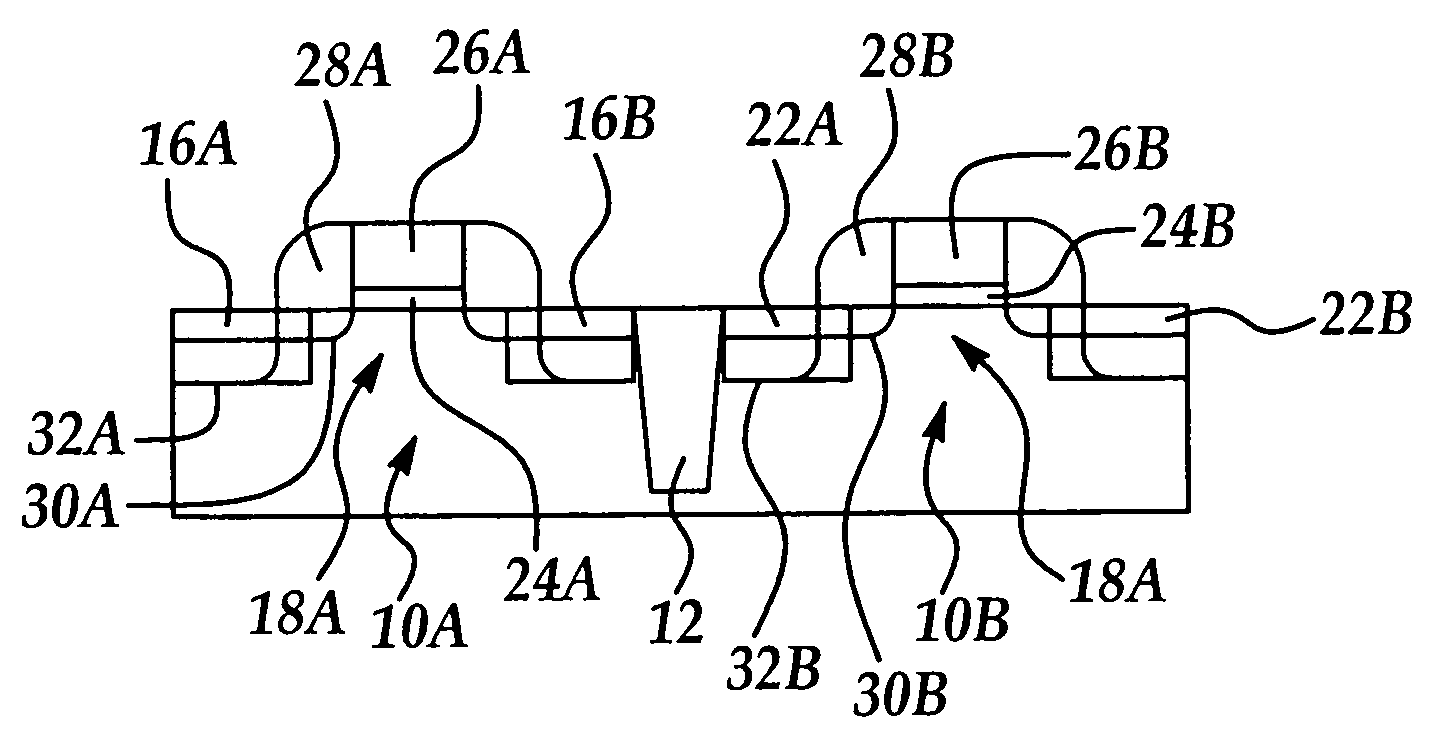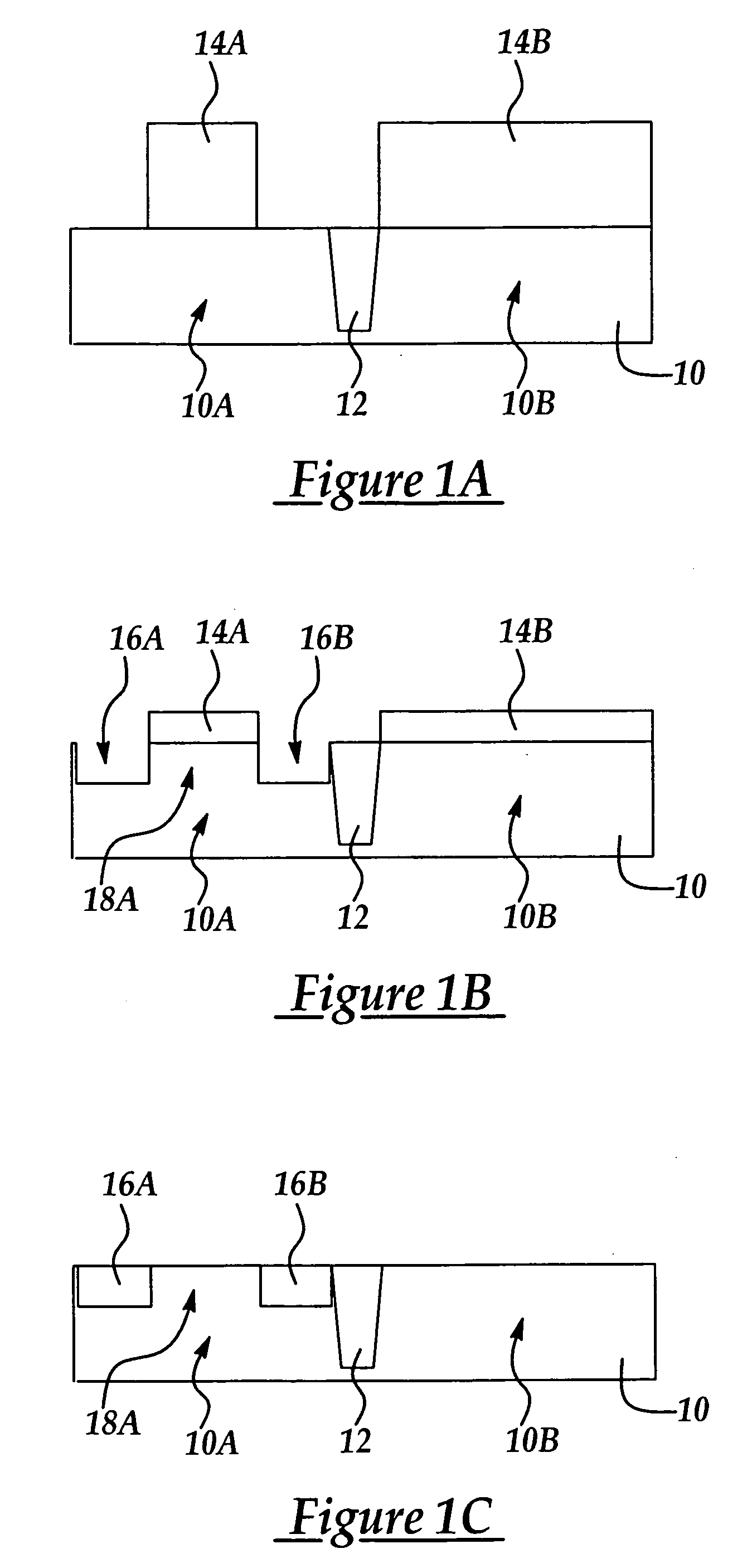CMOS device with selectively formed and backfilled semiconductor substrate areas to improve device performance
a technology of semiconductor substrate and semiconductor device, applied in the field of mosfet device formation, can solve the problems of reducing affecting the performance of nmos device, and limited success of approaches
- Summary
- Abstract
- Description
- Claims
- Application Information
AI Technical Summary
Problems solved by technology
Method used
Image
Examples
first embodiment
[0020] In the first embodiment as shown in FIGS. 1A-1E, when different semiconductor alloys are used to backfill the respectively formed PMOS and NMOS recessed areas having respectively expanded lattice parameters and contracted lattice parameters compared to silicon as explained further below, a recessed depth of up to about 800 Angstroms, more preferably from about 200 to about 400 Angstroms is sufficient to form the desired respective compressive and tensile stresses in the respective channel regions of the PMOS and NMOS devices.
[0021] Referring to FIG. 1C, following removal of remaining portion of the resist layer e.g., 14A and 14B portions, a semiconductor alloy comprising silicon and an element having a larger atomic radius is formed to form a first strained silicon composite (alloy), preferably semiconducting, having an expanded lattice cell volume (dimension) compared to silicon is then formed to backfill the first recessed areas 16A and 16B. In a preferred embodiment, the f...
second embodiment
[0025] Referring to FIG. 2A, in a second embodiment according to an exemplary process flow, the silicon substrate 10 is for example phosphorous doped and the PMOS region 10A is patterned as previously outlined in FIG. 1A with resist layer portion 14A, however, in this embodiment, the NMOS substrate portion 10B is left exposed.
[0026] Referring to FIG. 2B, in a conventional wet or dry etching process, preferably a dry etching process, recessed area portions 16A and 16B are formed as previously outlines in FIG. 1B, however, the NMOS substrate portion 10B is now etched to include the channel region 18B, for example substantially the entire portion of active NMOS region 10B is etched to form a recessed portion 22. In this embodiment, the depth of the recessed area is preferably up to about 800 Angstroms, more preferably having a depth from about 200 to about 600 Angstroms.
[0027] Referring to FIG. 2C, following removal of remaining resist layer portions e.g., 14A, a semiconductor alloy c...
PUM
 Login to View More
Login to View More Abstract
Description
Claims
Application Information
 Login to View More
Login to View More - R&D
- Intellectual Property
- Life Sciences
- Materials
- Tech Scout
- Unparalleled Data Quality
- Higher Quality Content
- 60% Fewer Hallucinations
Browse by: Latest US Patents, China's latest patents, Technical Efficacy Thesaurus, Application Domain, Technology Topic, Popular Technical Reports.
© 2025 PatSnap. All rights reserved.Legal|Privacy policy|Modern Slavery Act Transparency Statement|Sitemap|About US| Contact US: help@patsnap.com



